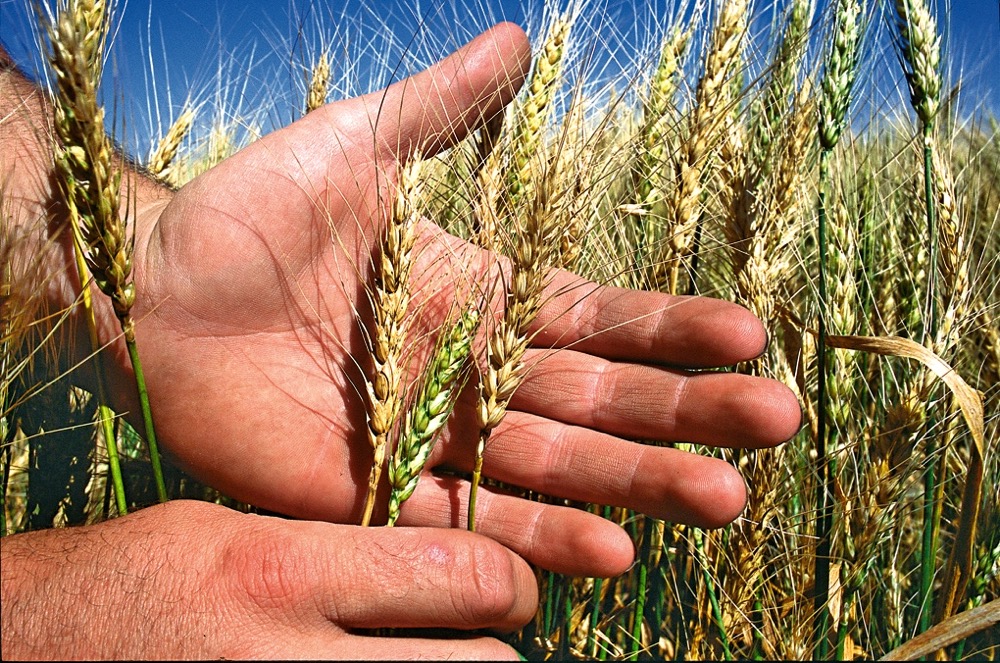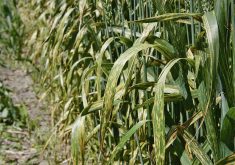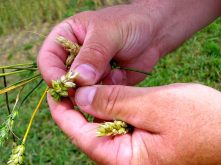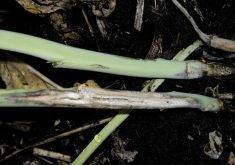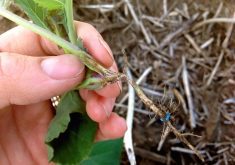Fusarium graminearum (Fg) is a serious fungal disease, affecting yield and quality.
Recent surveys indicate Fg is established in southern Alberta and traces are present in central and northern regions of the province.
“When weather conditions are favourable for infection, and in irrigated cropping systems, an in-crop fungicide application may be considered, but only provides disease suppression,” said provincial crop specialist Neil Whatley.
Cereal crops are most vulnerable to Fg infection at flowering time if weather conditions are moist and warm, and if the disease is established in the lower canopy. Disease spores are spread by rain splashes and wind to infect open flowers.
Read Also

Hail research hopes to benefit potato growers
Alberta research scientist measures hail storm and heat dome affects on potato crops
“Observable Fg symptoms don’t appear until the late-heading stage when it is too late to apply protective fungicide,” said Whatley. “A decision to apply a fungicide must be made prior to this, at the early-flowering stage. If disease risk level is assessed as moderate to high, and yield return justifies fungicide application cost, a foliar fungicide application should be applied at early flowering to protect open florets.”
It’s better to apply fungicide too early than too late, he said.
“With wheat, flowering begins three to four days after head emergence and lasts approximately seven days. The optimum stage for fungicide application is during early flowering when some visible anthers are present on the head.”
With barley, flowering begins just prior to head emergence and continues during heading, lasting approximately 14 days. The optimum stage for fungicide application is when the spike is fully emerged from the boot.
“Studies indicate that Fg control is improved by directing spray nozzles at 30 degrees from the horizontal either forward or backward or simultaneously forward and backward, and using a high water volume to optimally cover grain heads,” said Whatley. “While 10 gallons (45 litres) per acre of water are adequate for spring wheat, 18 gallons (80 litres) per acre are recommended for durum as durum grain heads are more difficult to wet.”
The most apparent symptom is premature bleaching or blighting of one or more spikelets in the head, which stands out on green heads.
“Under prolonged humid conditions, orange-coloured fungal spores appear on blighted parts of the head. If these symptoms are observed, send a plant tissue sample from the infected head area to a lab to determine whether it is the graminearum species of fusarium.”

